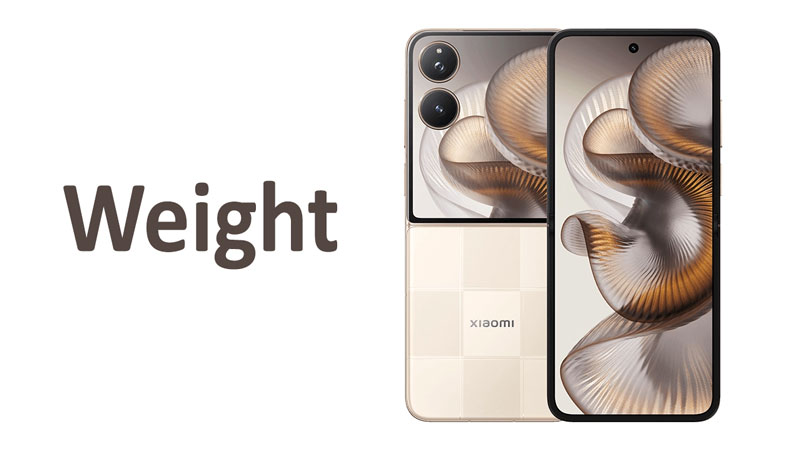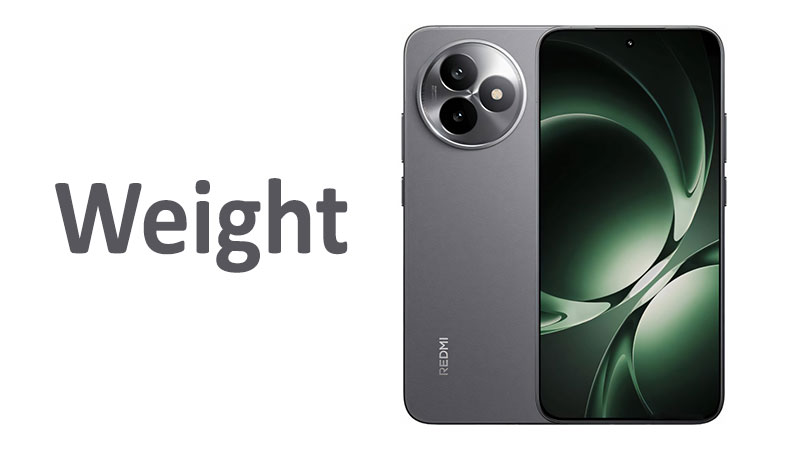The vivo Y19s weight is a key specification for potential buyers. It determines the daily portability and feel of the device. This comprehensive analysis dives into the phone’s exact mass in both metric and imperial units. It explores how this weight impacts the user experience. The 199-gram figure is highly competitive in the mid-range smartphone market. It represents a careful balance. vivo designed the Y19s to offer a large battery without creating an overly bulky phone. Understanding this weight is crucial. It helps consumers appreciate the engineering behind the device’s design. This article provides all the necessary details for a complete buying decision.
Detailed Weight Specifications: 199g (7.02 oz)
The official specification confirms the vivo Y19s weight is precisely 199 grams. This measurement comes straight from the manufacturer. It provides a baseline for evaluating the device’s physical presence. Converting this metric mass gives us the imperial measurement of 7.02 ounces. This weight applies to the phone with the standard internal battery installed. It does not include external accessories or protective cases.
This 199g mass places the vivo Y19s in a specific category. It is slightly heavier than ultra-slim flagship phones, which often sit below 180 grams. However, it is also significantly lighter than many battery-focused budget devices. Some competitors with similar battery capacities often cross the 210-gram mark. The 199-gram weight reflects a targeted design strategy. vivo prioritized a comfortable, all-day carry experience. The density and mass distribution make the phone feel solid and reassuring in the hand. It avoids feeling fragile. The weight is consistent across all color variants of the vivo Y19s. Users can expect the same tactile experience regardless of their aesthetic choice.
The 7.02 ounces figure is easy to visualize for buyers familiar with imperial units. It is comparable to the weight of a standard baseball. This analogy helps contextualize its presence in a pocket or bag. The phone’s mass is a direct result of its components. Engineers carefully selected materials to hit this specific target weight. They optimized the frame structure and component placement. The final 199g mass is a significant achievement in modern smartphone design. It combines a large screen with a powerful battery without becoming burdensome.
The Engineering of Portability: Factors Influencing the Mass
Several interconnected components determine the final 199-gram weight of the vivo Y19s. Understanding these factors provides insight into the phone’s structural integrity. It explains the trade-offs made during the design phase. The primary contributors are the battery, the chassis materials, and the display assembly.
The 5000 mAh Battery and Density
The battery is universally the heaviest single component in any modern smartphone. The vivo Y19s features a substantial 5000 mAh lithium-polymer cell. This high capacity provides excellent, multi-day endurance for most users. This size of battery naturally contributes significant mass. A typical 5000 mAh unit weighs between 60 to 70 grams on its own. It accounts for roughly one-third of the device’s total weight.
Engineers at vivo worked hard to mitigate this mass. They used high-density lithium cells. This design choice packs maximum energy into minimum physical volume and weight. The Y19s maintains an impressive 199g mass despite its large power source. This keeps the phone highly competitive against rivals. Phones with smaller 4500 mAh batteries often weigh similarly due to less efficient material usage elsewhere. The battery configuration is a primary driver of the phone’s density and overall feel.
Material Selection: Plastic Back and Frame
The vivo Y19s utilizes a plastic (polycarbonate) construction for its back panel and frame. This choice directly impacts the 199-gram weight. Plastic is inherently lighter than the aluminum or glass used in premium flagship models. A plastic chassis reduces the overall structural weight. This weight saving allows vivo to allocate more mass to essential components, like the battery.
The polycarbonate material offers other advantages. It is more flexible than glass. This makes it naturally more resistant to minor drops and bumps. It absorbs shock better than rigid materials. While a plastic back might feel less “premium” to some, it is a key factor in achieving the target weight of 199 grams. It ensures the device remains light and durable for its price point. The material choice demonstrates a practical, user-focused design philosophy.
Display Size and Glass Protection
The phone features a large 6.53-inch display. The screen assembly, including the LCD panel, backlight, touch sensor, and protective glass, contributes substantial weight. Larger screens always result in heavier phones. The Y19s uses a specific type of protective glass on its front. This glass must be thick enough to resist scratches and minor impacts. The type of glass used is usually a durable, custom-branded alkali-aluminosilicate product.
While not as dense as the Gorilla Glass Victus used on high-end phones, the protective panel still adds necessary grams. Furthermore, the display is bonded tightly to the chassis. This bonding requires robust internal supports. These supports ensure the screen does not flex or detach under pressure. The combination of a large display area and necessary protective layers contributes significantly to the 199g final weight. The phone balances screen immersion with manageable mass.
Internal Component Layout
The arrangement of internal components is crucial for distributing the 199g mass evenly. Components include the camera modules, the motherboard, the cooling system, and the vibration motor. Engineers carefully placed these items. This ensures the phone is not top-heavy or bottom-heavy. A well-balanced phone feels lighter than its specification suggests. The vivo Y19s achieves good balance.
The motherboard is often compact and dense. The camera modules, particularly the main rear sensor, contain glass lenses and metal actuators, adding localized mass. Even the internal copper foil or graphite sheets used for thermal management contribute a few grams. Every internal element is optimized for size and weight. The successful execution of this internal layout contributes greatly to the phone’s overall feel and handling comfort. The design mitigates the bulk associated with the large battery.
Specialized Weight Comparisons: The Mid-Range Landscape
To properly assess the 199g mass of the vivo Y19s, we must examine it within the context of its competitors and predecessors. This comparative analysis highlights its standing in the fiercely competitive mid-range segment.
Against the Predecessor: vivo Y19
The vivo Y19, the likely predecessor to the Y19s, had a published weight of approximately 193 grams. This makes the newer Y19s model just 6 grams heavier. This minor difference is highly significant from a manufacturing perspective. It suggests that vivo maintained the core structural design and overall form factor. The marginal increase likely stems from specific component upgrades.
Possible causes for the 6-gram increase include a slightly larger camera module or improved structural reinforcement. It could also be a fractionally larger battery cell with denser chemical components. Crucially, the near-identical weight ensures that users upgrading from the Y19 experience no noticeable change in portability. This consistency in feel and dimensions is important for user retention. It simplifies the transition for dedicated vivo users.
The 5000 mAh Competition
The 199g weight is highly favorable when comparing the Y19s to its main rivals in the large-battery, mid-range class. Many competitors also feature 5000 mAh batteries. For example, some Samsung Galaxy A-series models with similar batteries often weigh 205 grams or more. Certain Xiaomi Redmi Note devices also easily exceed the 200-gram threshold.
The vivo Y19s successfully undercuts these rivals. It manages to deliver the same power endurance for a few grams less. This difference may seem small on paper. However, it translates into better long-term comfort when carried in a pocket all day. It gives the vivo Y19s a subtle but measurable advantage in the ergonomics of portability. This lightweight design for a powerful phone is a major selling point in its category.
Weight vs. Thickness and Ergonomics
Weight cannot be analyzed in isolation from the phone’s dimensions. The vivo Y19s measures approximately 8.89 mm in thickness. This is relatively slim for a phone housing a 5000 mAh battery. Devices that exceed 200g often also exceed 9.0 mm in thickness. The combination of 199g mass and a sub-9.0 mm thickness creates excellent ergonomics.
The weight is distributed across a thin profile. This distribution makes the phone feel slimmer and lighter than a thicker, more blocky device. The tapered edges of the plastic back also contribute to this perception. They fit comfortably in the palm. The design prioritizes handling comfort. It avoids the brick-like feel associated with some budget phones. The weight and slimness work together. They deliver a premium feel in a mid-range package.
Pros and Cons of the 199g Weight
The 199-gram weight of the vivo Y19s generates distinct advantages and disadvantages. These factors directly influence the day-to-day user experience. Buyers must consider these points based on their personal preferences and usage patterns.
Advantages for Daily Handling and Battery
The 199g weight instills a sense of quality and robustness. A solid mass generally equates to better build quality in the user’s mind. The phone does not feel cheap or hollow. This confidence in durability is a major psychological benefit. The weight also provides necessary stability for one-handed operation. It prevents the phone from feeling top-heavy. This stability makes the large 6.53-inch screen easier to navigate.
Furthermore, the weight directly indicates the large 5000 mAh battery capacity. Users accept this mass as a necessary trade-off for superior battery life. They gain multi-day power. This convenience far outweighs the minor added weight for most users. This density ensures better grip and less accidental slippage compared to very light, thin glass phones. The mass contributes to overall device longevity.
Drawbacks for Lightweight Enthusiasts
The 199-gram figure is still heavy for users transitioning from ultra-light flagship phones. Flagships often prioritize lightness and slimness over battery capacity. Users accustomed to 170-gram devices may find the Y19s noticeable in a shirt pocket. This can be a minor inconvenience in tight clothing. Over very extended use, such as continuous reading or gaming sessions lasting hours, the weight can contribute to slight hand fatigue.
The mass also increases the kinetic energy during a drop. Although the phone is generally robust, heavier objects hit the ground with more force. This theoretically increases the potential for damage if the phone lands on an unprotected corner. This is a risk mitigated by the plastic chassis. The material is designed to absorb impact energy effectively. The main disadvantage remains the slightly reduced portability compared to the absolute lightest phones on the market.
Essential Considerations for the Buyer
Potential buyers must consider how the 199g weight integrates into their specific lifestyle. The ideal user for the vivo Y19s embraces the phone’s characteristics. They prioritize battery life and durability over absolute lightness.
Target User Profile
The vivo Y19s is an excellent choice for several user profiles. It appeals to commuters, students, and active professionals. These individuals spend significant time away from a charging point. They require dependable battery endurance. The 199g weight is perfectly acceptable for these users. They understand the weight is a direct investment in the 5000 mAh power cell. They carry the phone in a backpack, purse, or trouser pocket where the mass is less noticeable.
The phone is not aimed at users who exclusively prioritize aesthetics and minimal bulk. It targets practical, everyday dependability. The phone’s solid construction and mass reassure users that it can withstand the rigors of daily use. It is a workhorse device in the mid-range segment.
Impact of Accessories and Cases
The 199-gram weight is only the starting point for the total carried mass. Most buyers immediately add a protective case. A basic silicone case adds between 20 and 30 grams. A heavy-duty, ruggedized case can easily add 50 to 80 grams. The total carrying weight could quickly approach 250 to 280 grams. Buyers must factor in this accessory weight. They should anticipate the final carry weight when making their purchase decision.
Using a folio or wallet case also adds substantial bulk and mass. While necessary for protection, these accessories transform the phone’s physical presence. Users should select lightweight cases if they wish to maintain the phone’s excellent 199g portability advantage. The mass is manageable, but accessories can push it towards heavier device territory.
The Feel of Premium Density
The final weight and thickness combination create a specific tactile experience. The vivo Y19s avoids feeling dense in an unpleasant way. The 199g mass is evenly distributed across its large footprint. This distribution makes the phone feel balanced. It has a premium density. This density prevents the phone from feeling like a cheap, hollow plastic device.
The smooth plastic back contrasts nicely with the solid internal components. This construction provides satisfying feedback when held. The phone feels secure in the hand. It is less likely to slip out than lighter, smoother glass-backed alternatives. The weight ultimately contributes positively to the user’s sense of confidence and device longevity. It confirms the phone’s capable internal engineering.
Conclusion: Making an Informed Decision
The vivo Y19s weight of 199 grams (7.02 ounces) represents an optimal equilibrium. vivo achieved a successful balance between significant battery life and day-long portability. This mass is a direct consequence of integrating a large 5000 mAh battery into a relatively slim chassis. The use of a plastic back panel helps to keep the weight below the 200-gram mark. This gives the Y19s an ergonomic advantage over many heavier competitors in its class.
The weight indicates the phone’s robustness and structural integrity. It delivers a solid, confident feel in the hand. For professionals, students, and power users, the 199g is a worthwhile investment. It ensures multi-day performance without causing excessive fatigue. The vivo Y19s stands out as a lightweight option among large-battery smartphones. It delivers excellent functionality in a highly manageable package. Buyers can confidently choose the Y19s for its superior blend of endurance and comfortable portability.
Frequently Asked Questions (FAQ)
What is the exact weight of the vivo Y19s?
The exact weight of the vivo Y19s is 199 grams. This figure translates to approximately 7.02 ounces in the imperial system.
Why does the vivo Y19s weigh 199g?
The 199-gram mass is primarily due to the inclusion of a large 5000 mAh battery. The device uses a lightweight plastic chassis to offset this battery weight.
Is the Y19s considered heavy for a modern smartphone?
No. The Y19s is considered moderately light for its category. Most phones with a 5000 mAh battery weigh 200 grams or more.
How does the weight affect one-handed use?
The 199g weight is distributed evenly across the phone’s large body. This balance ensures the phone feels stable and secure during one-handed operation.
Does adding a case significantly increase the total weight?
Yes, adding a typical protective case can easily increase the total carried weight to 220–250 grams, depending on the case thickness and material.



